The Definition of a Sentence: Scholars have failed










































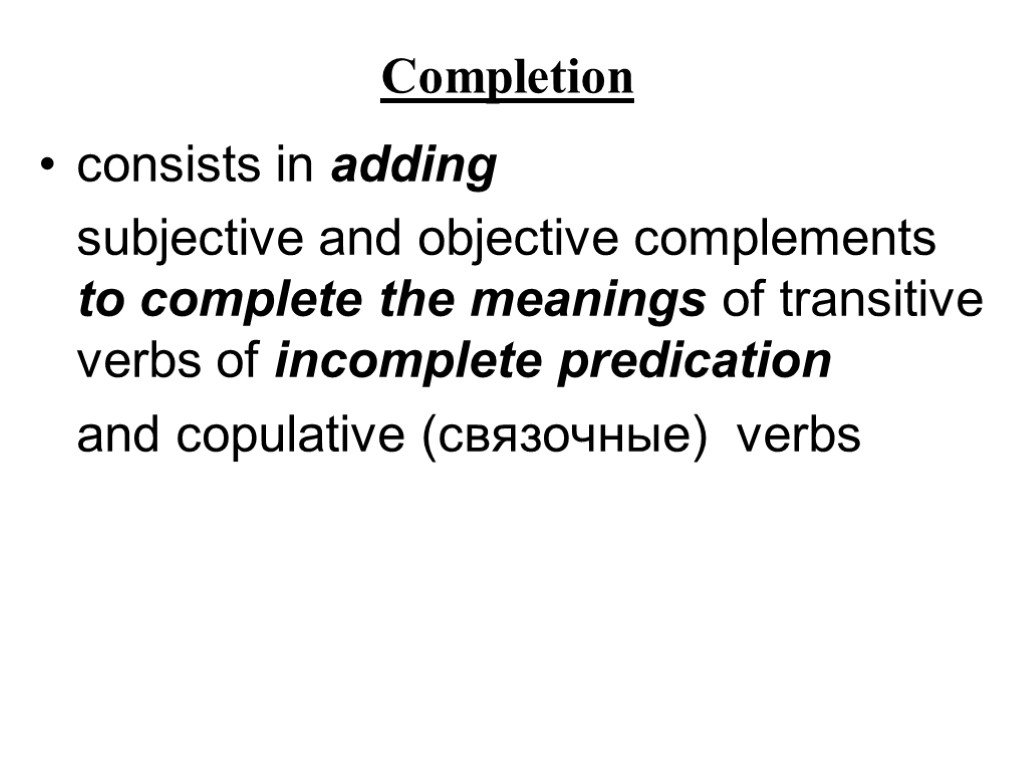





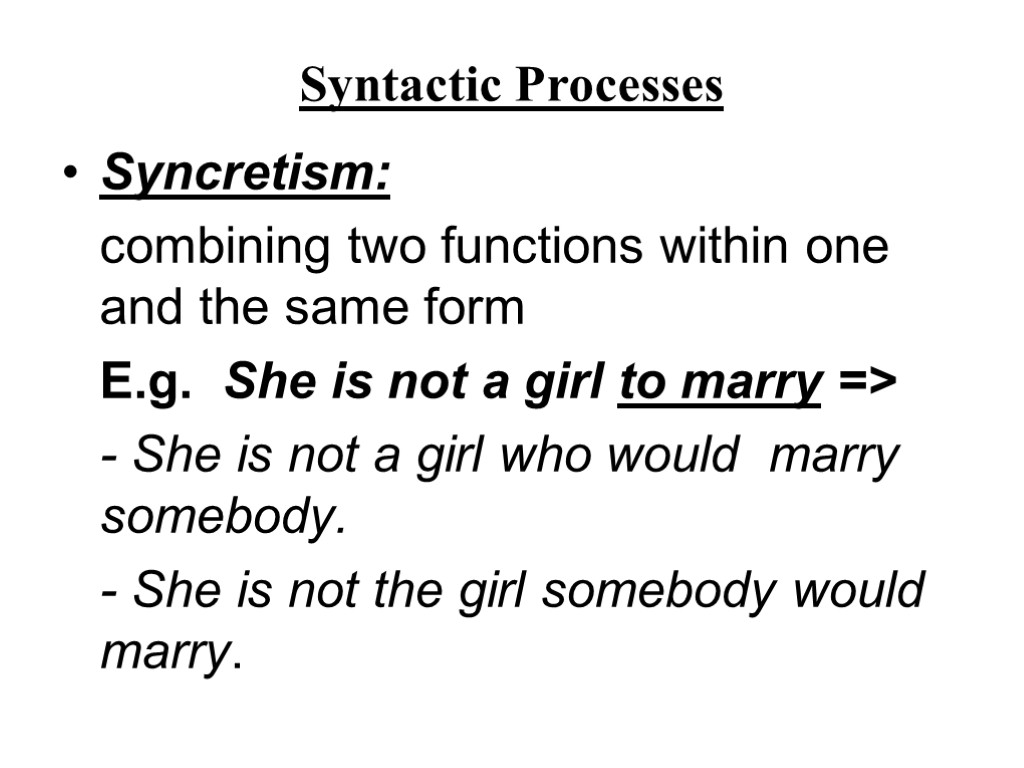

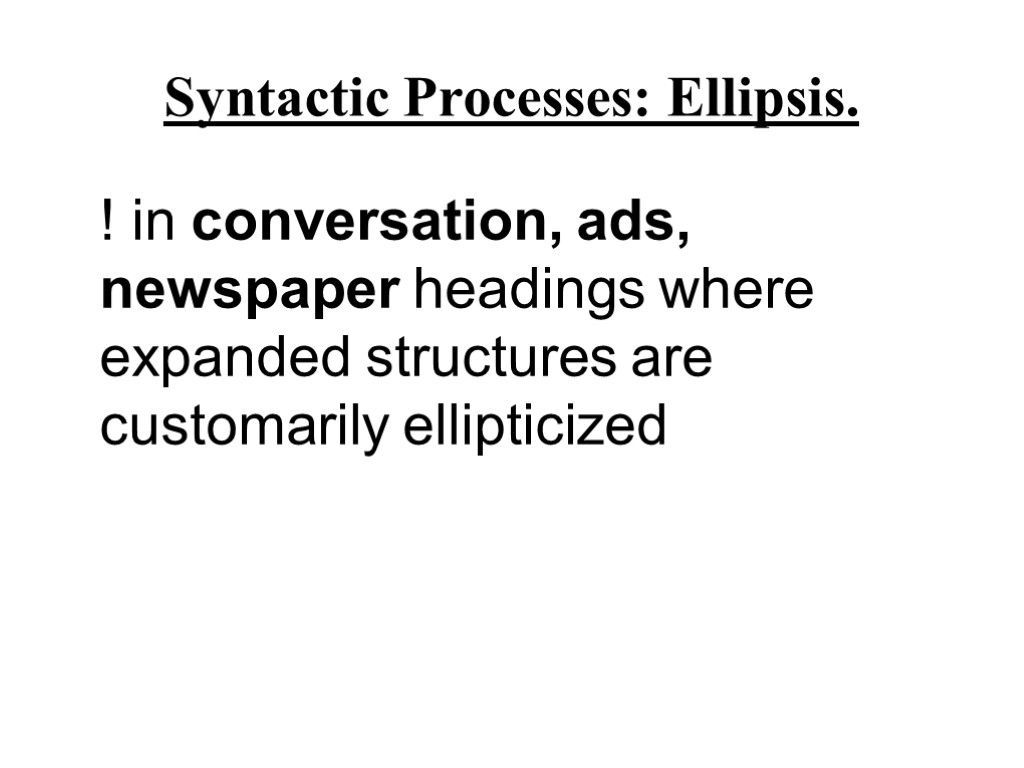
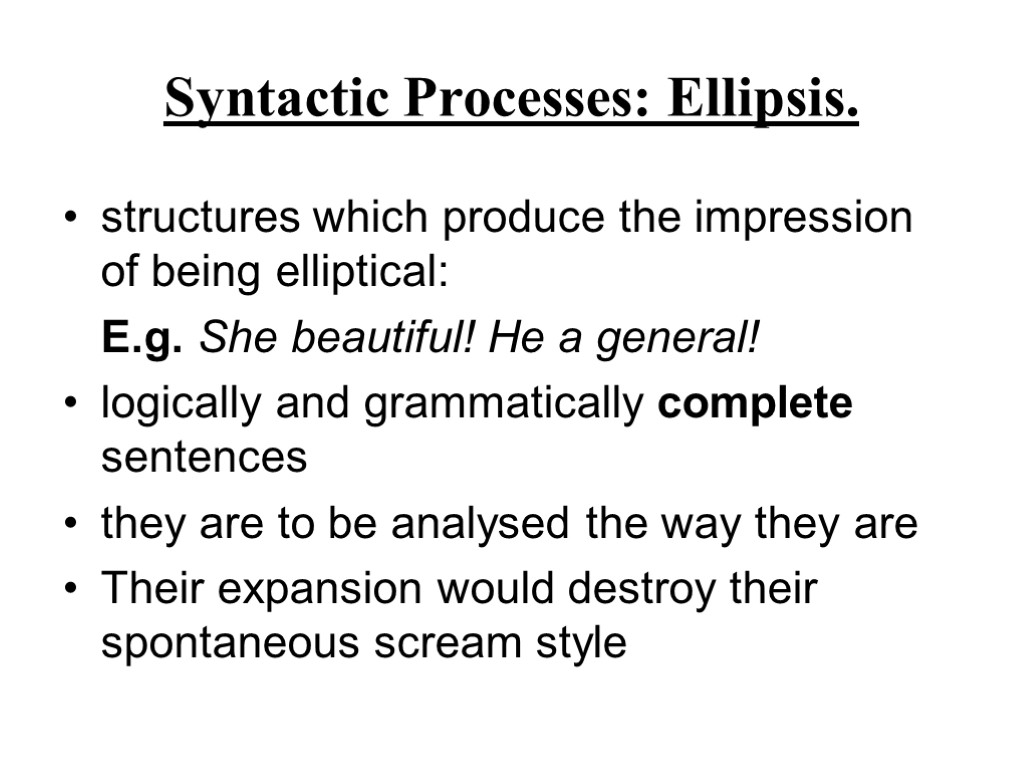

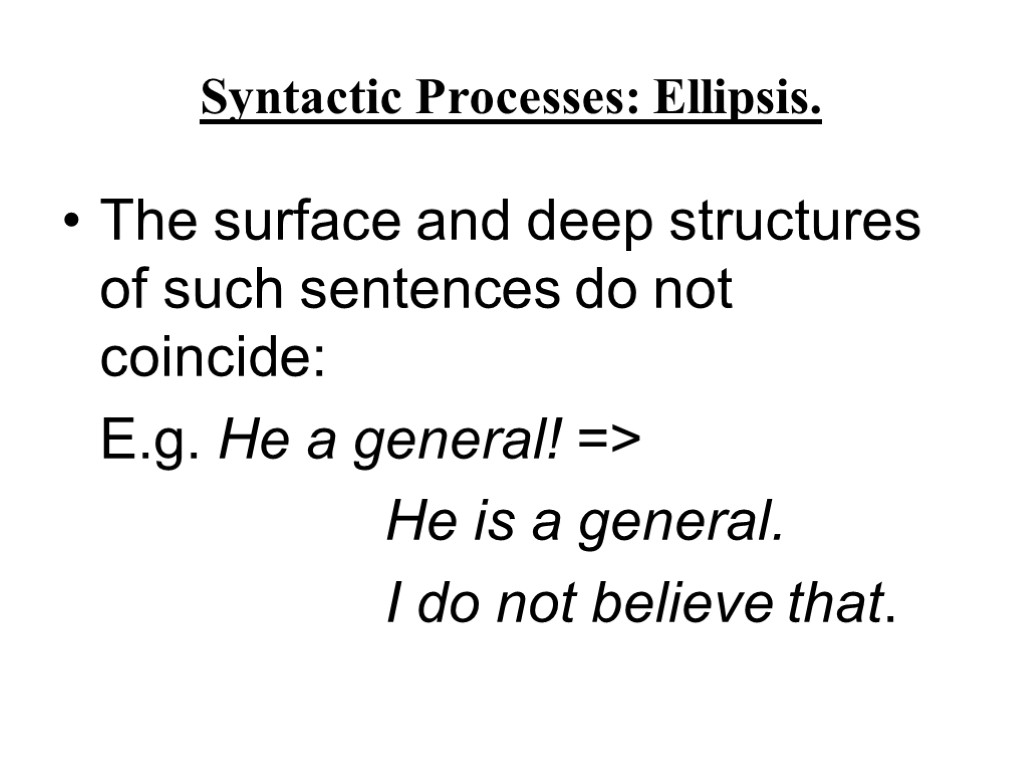
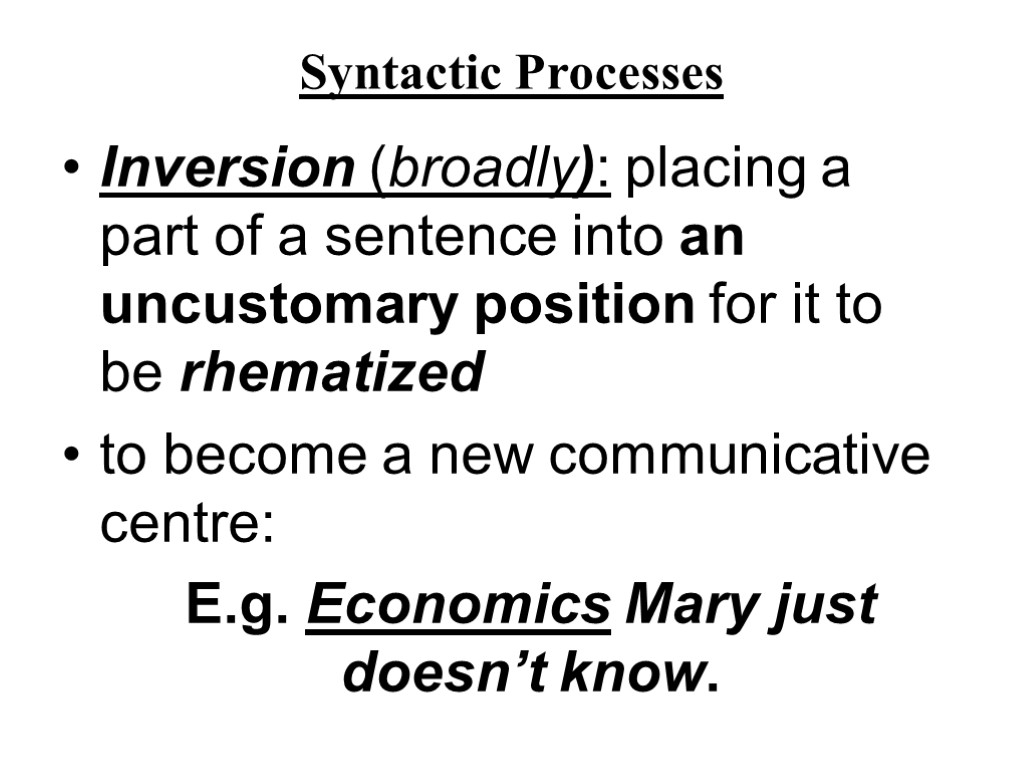
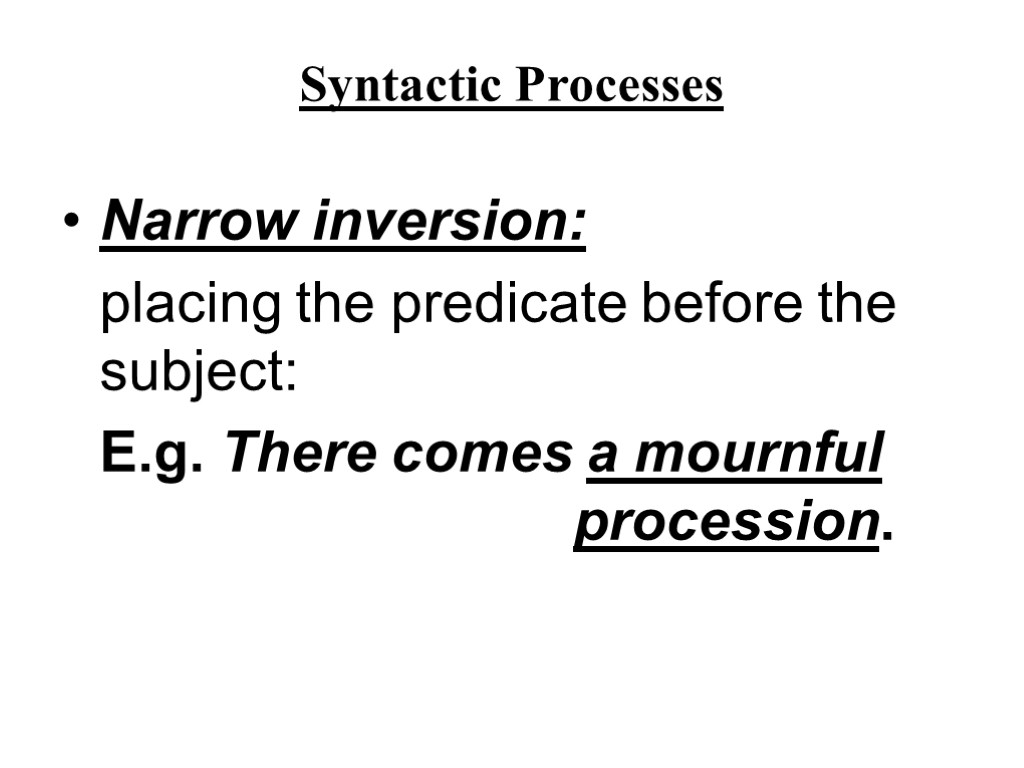
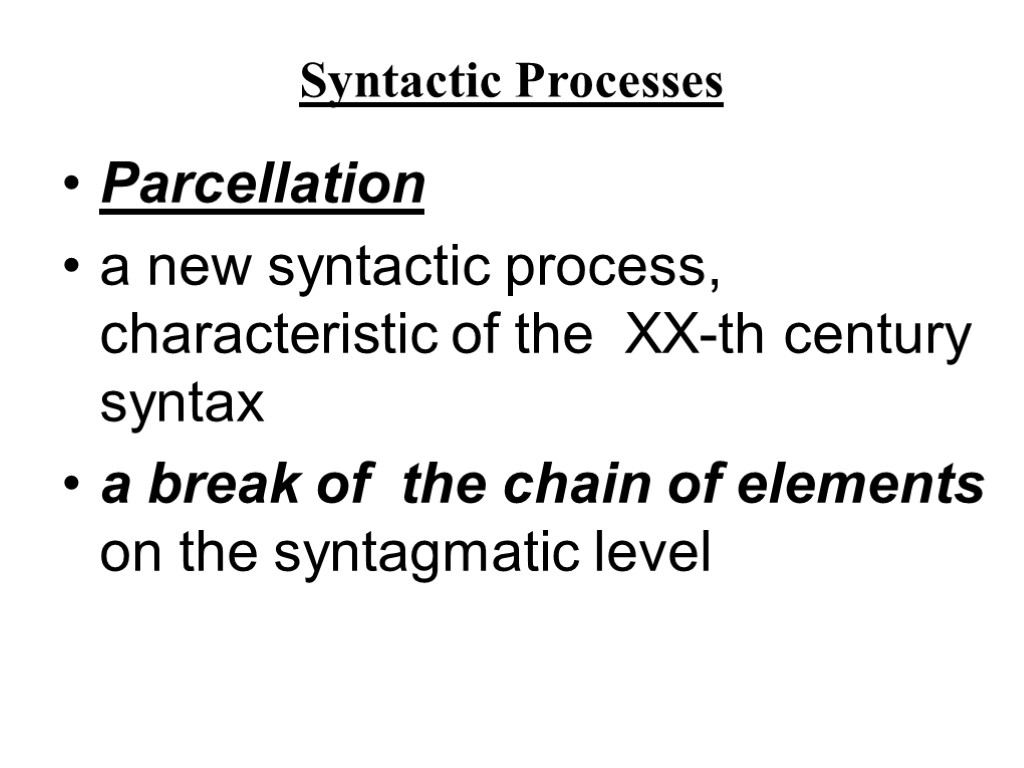
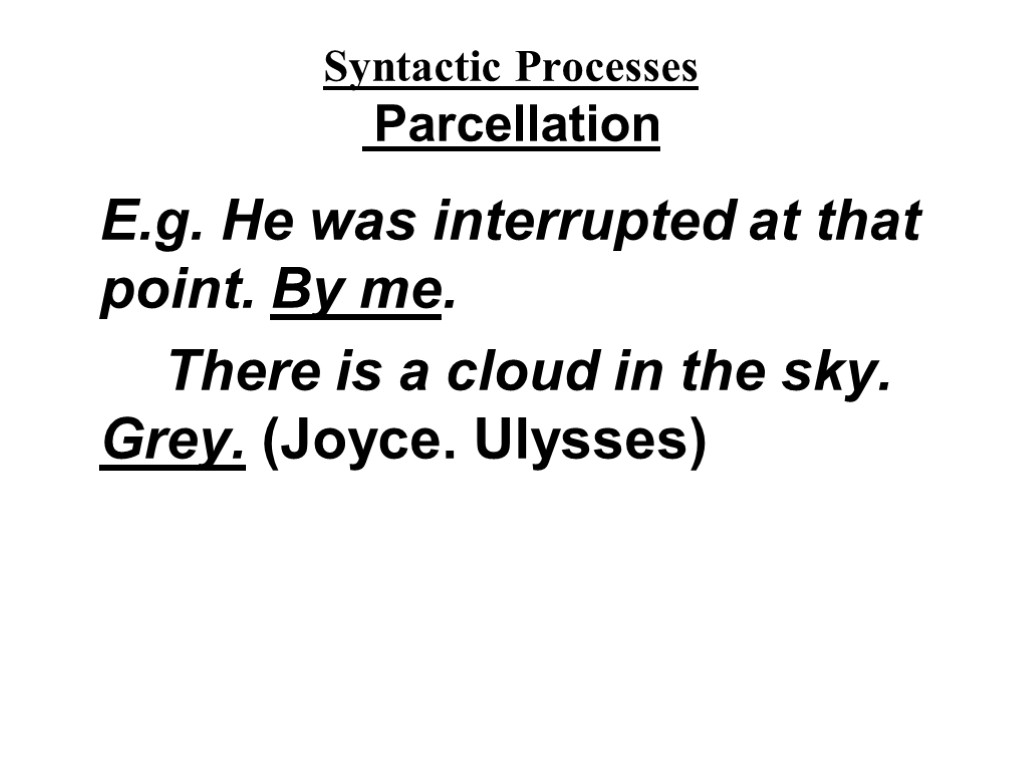

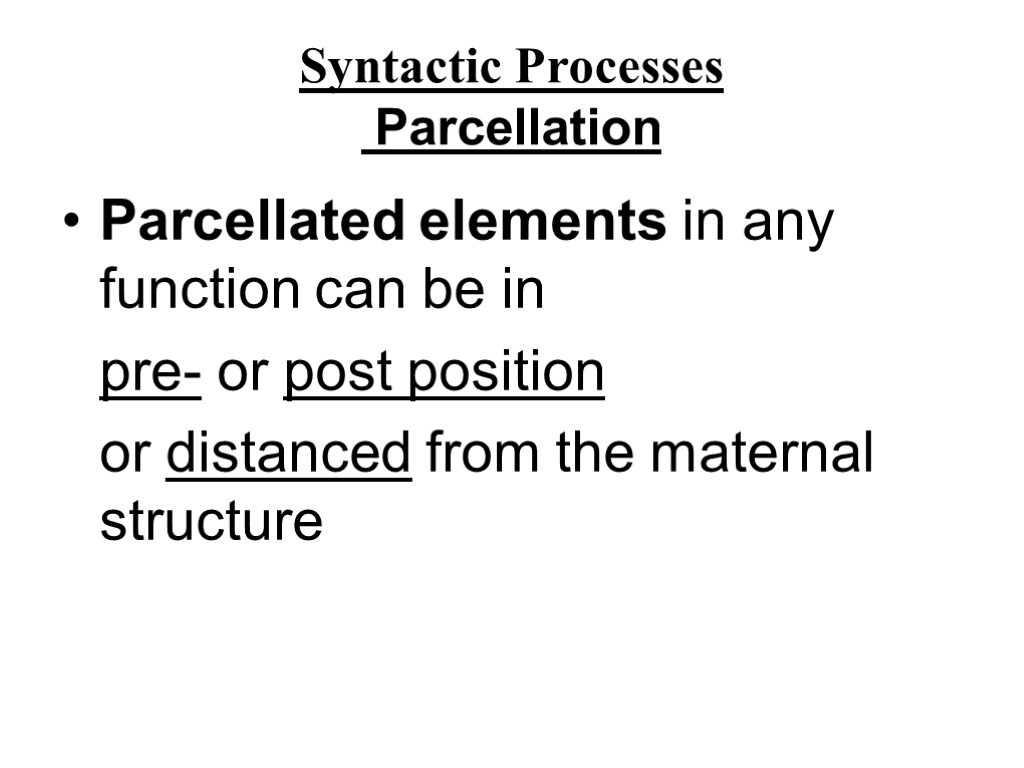
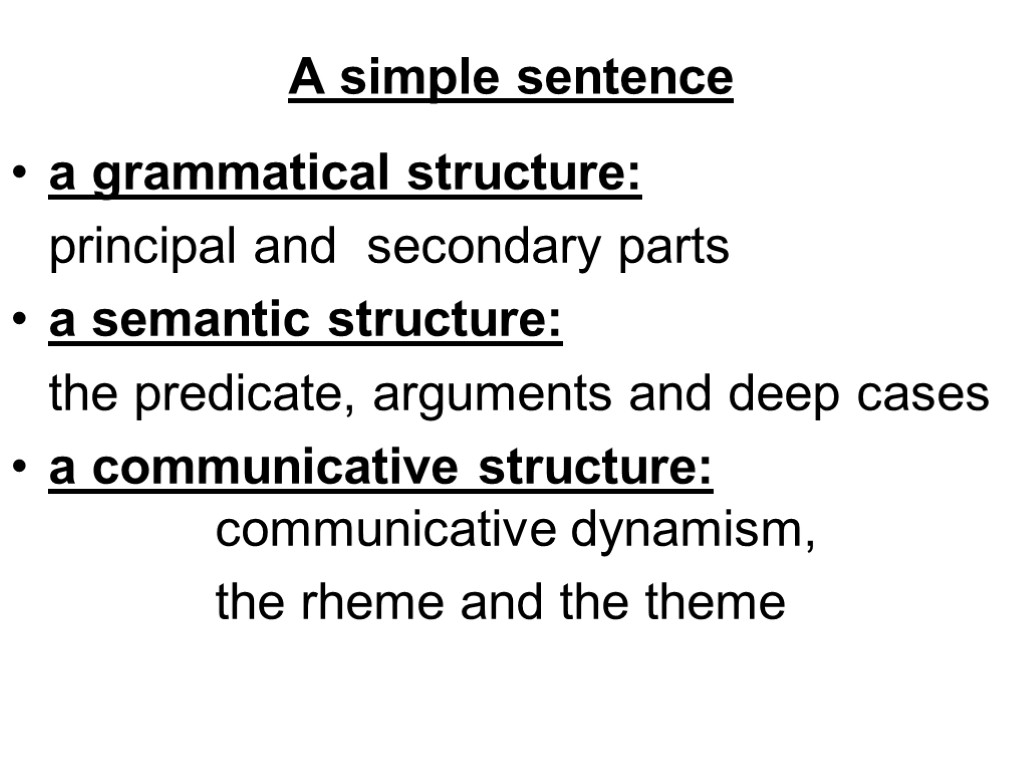

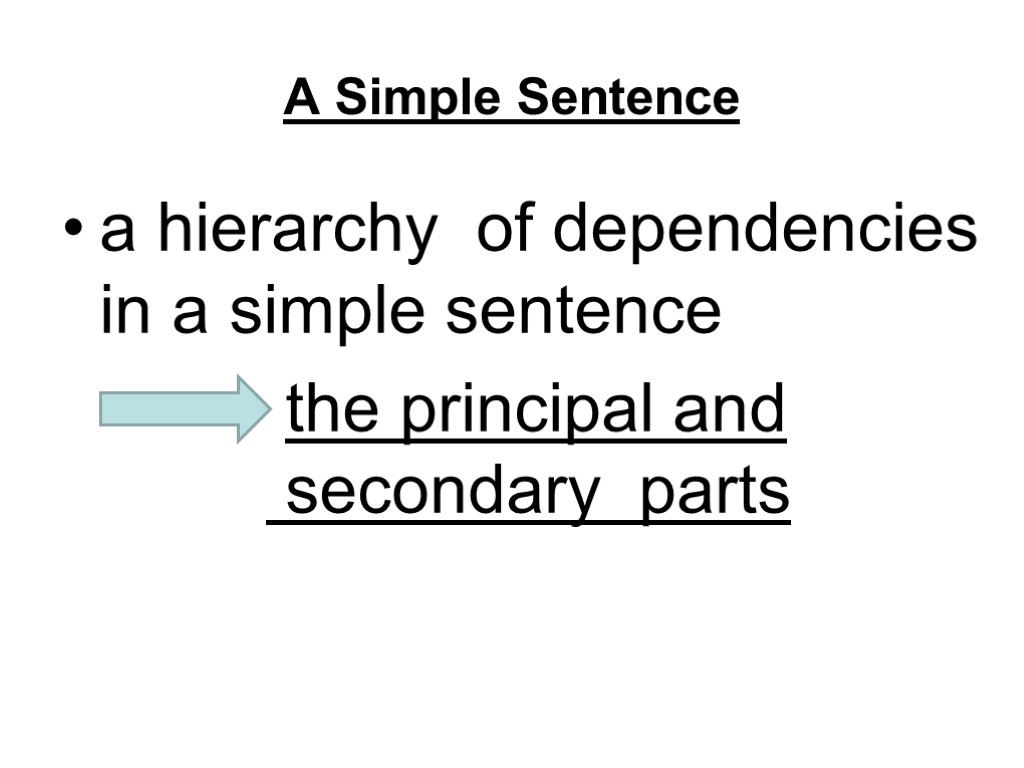

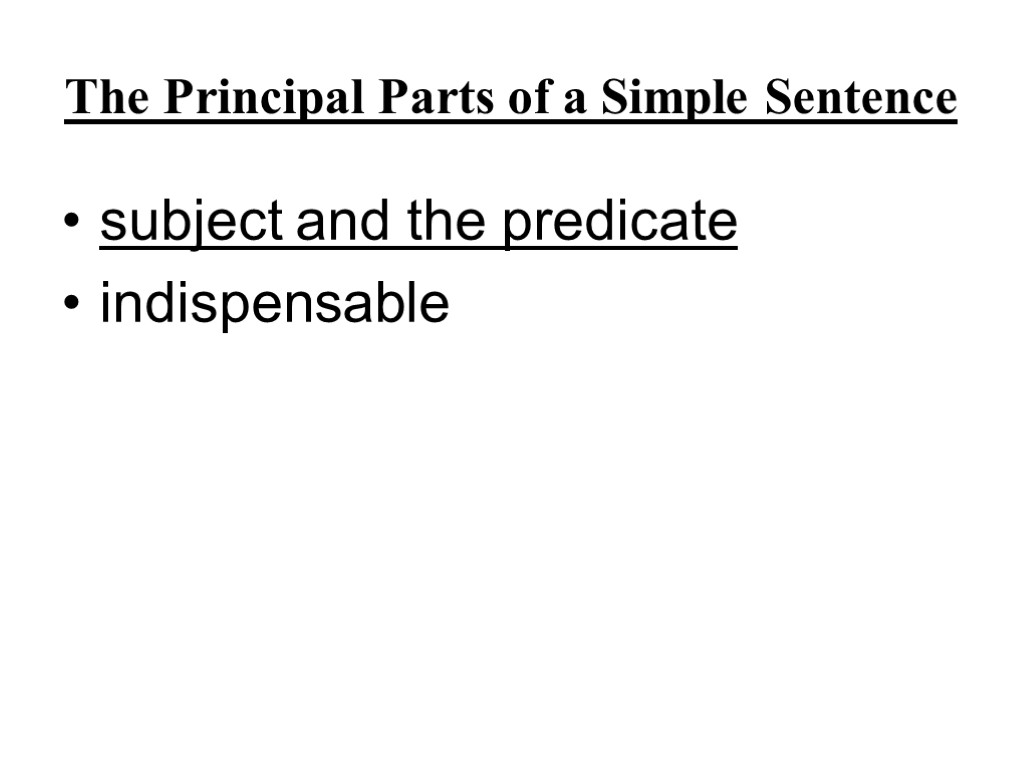
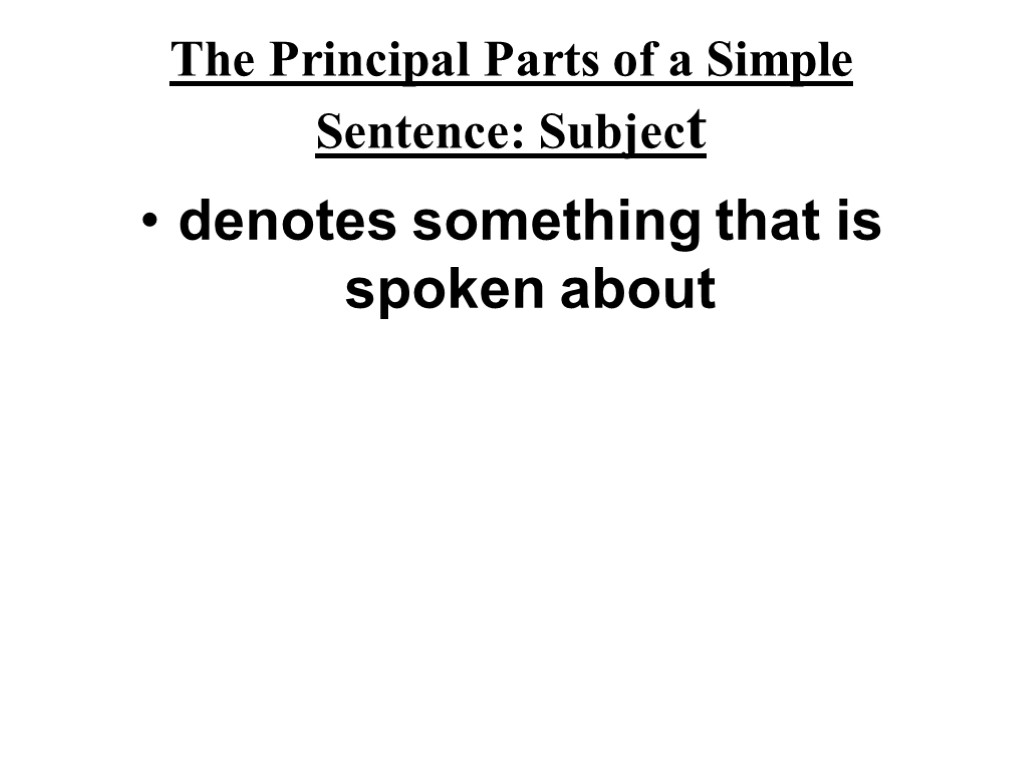
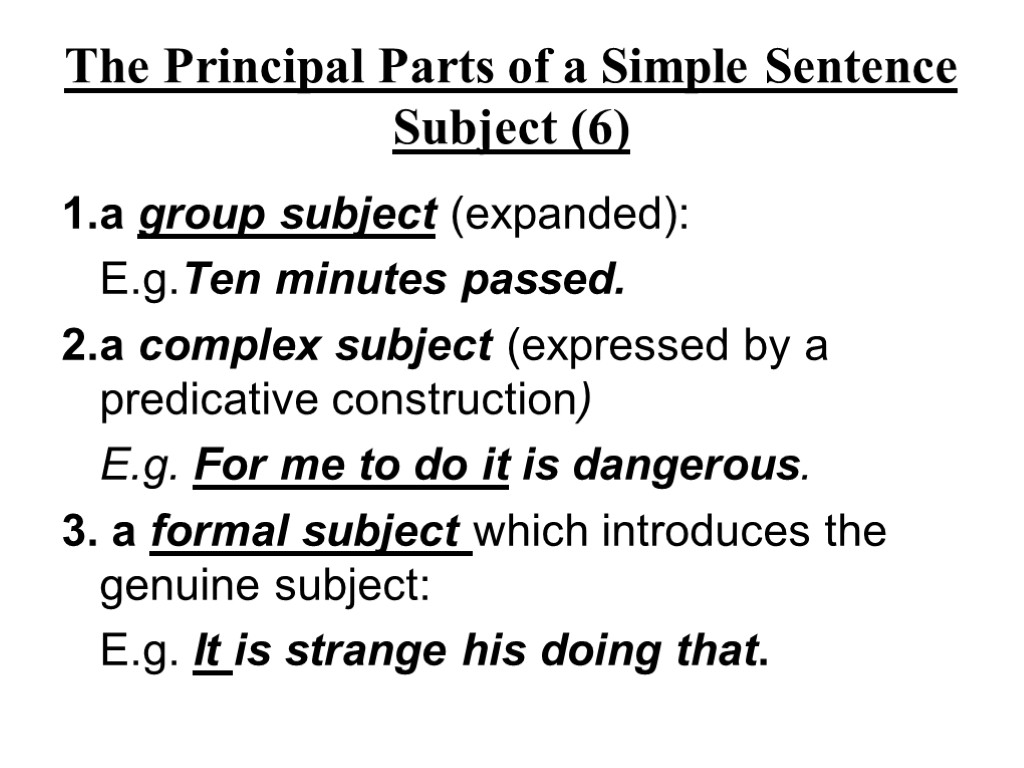
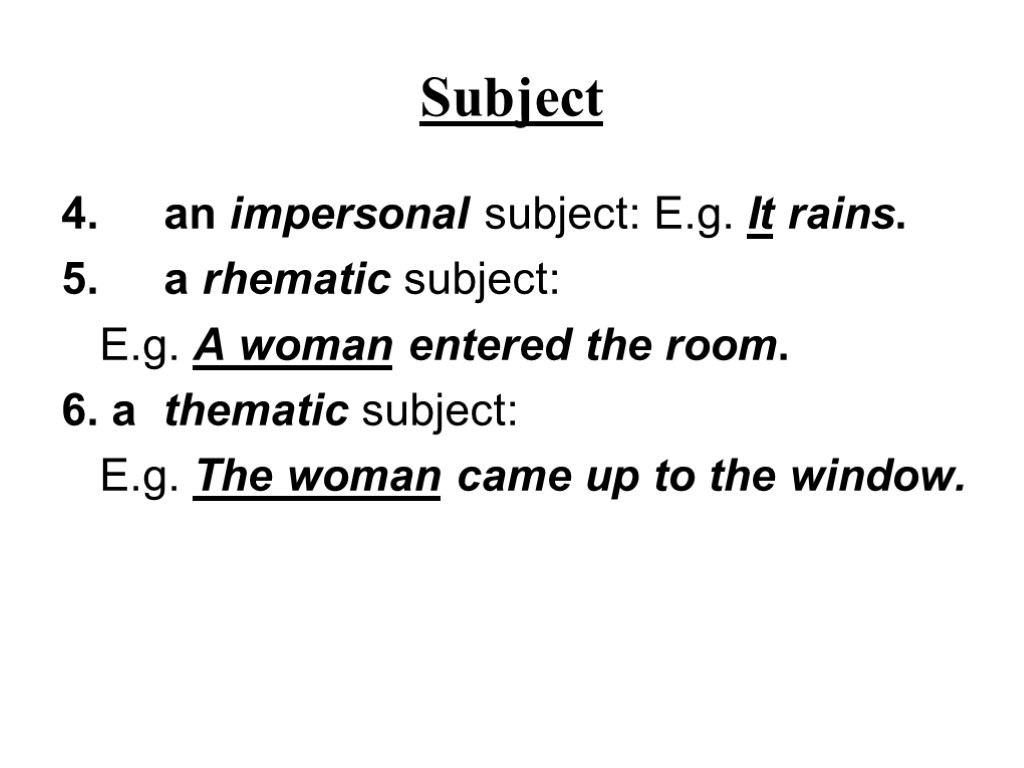

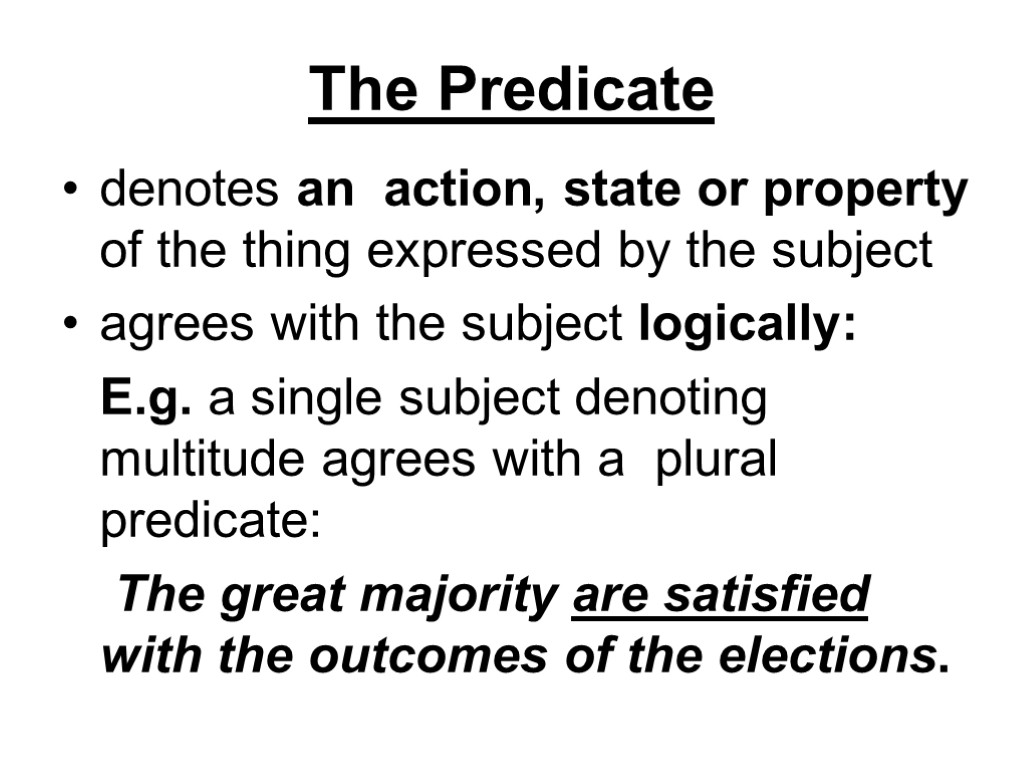
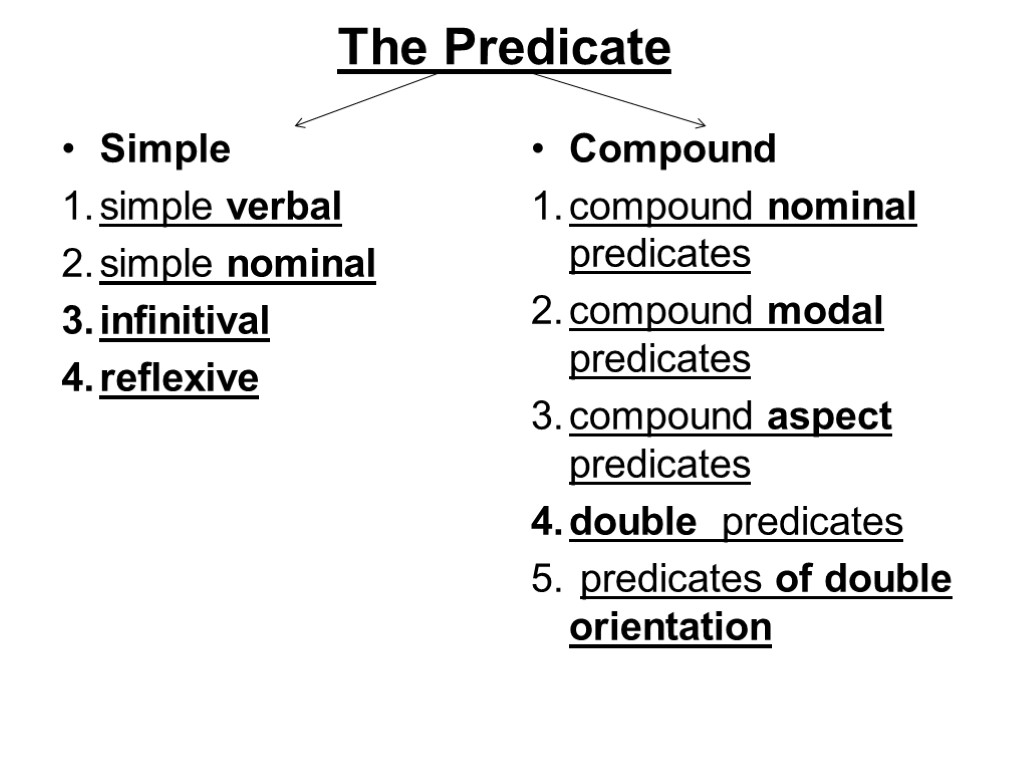








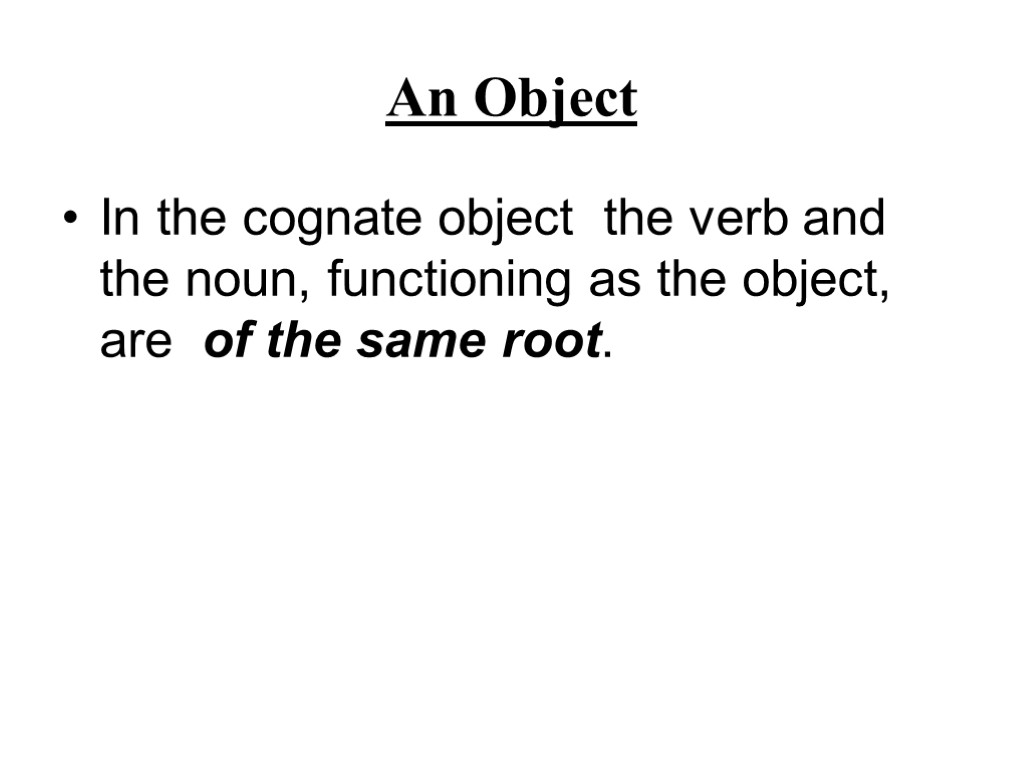
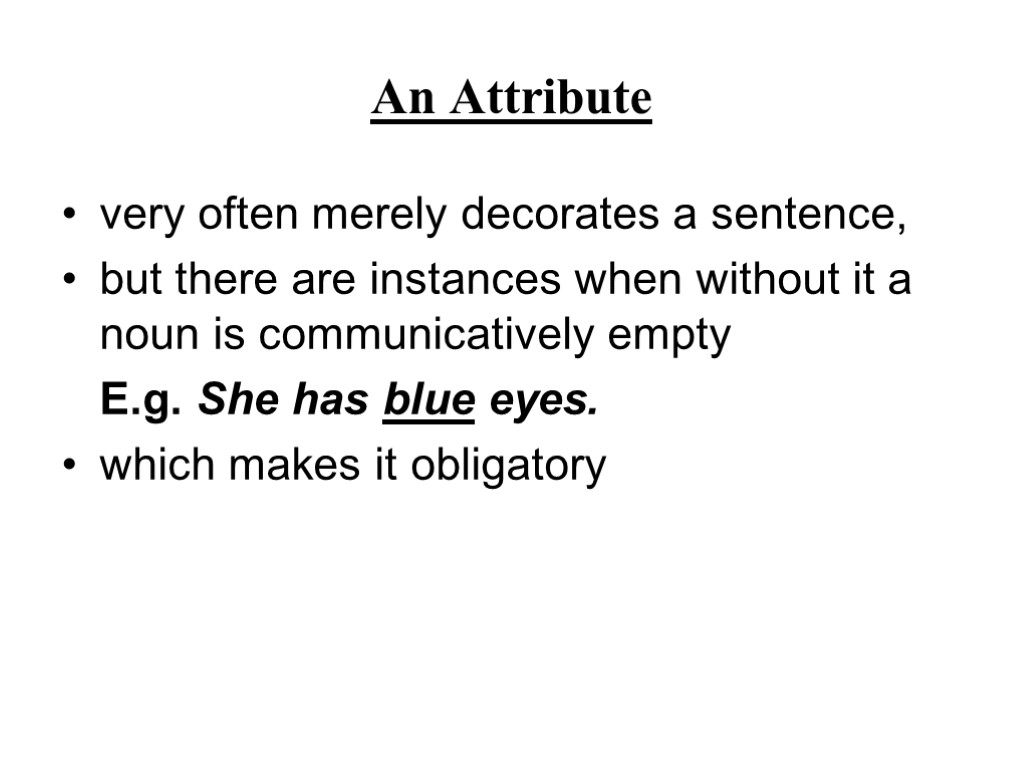

vech_the_theory_of_the_simple_s-ce_2011.ppt
- Количество слайдов: 81
 The Definition of a Sentence: Scholars have failed to achieve a generally acceptable definition There exist hundreds of definitions, but none of them is found adequate
The Definition of a Sentence: Scholars have failed to achieve a generally acceptable definition There exist hundreds of definitions, but none of them is found adequate
 The Definition of a Sentence a polyfunctional unit many aspects (facets): - - a grammatical structure - a certain distribution of communicative dynamism - modality - predicativity - intonation, etc.
The Definition of a Sentence a polyfunctional unit many aspects (facets): - - a grammatical structure - a certain distribution of communicative dynamism - modality - predicativity - intonation, etc.
 The Definition of a Sentence absolutely differing types of sentences: one-word sentences E.g. Help! Fire! Women! Magnificent! Eighty-five!
The Definition of a Sentence absolutely differing types of sentences: one-word sentences E.g. Help! Fire! Women! Magnificent! Eighty-five!
 The Definition of a Sentence 50 page-long sentences: Molly Bloom’s unpunctuated monologue from J. Joyce’s “Ulysses”
The Definition of a Sentence 50 page-long sentences: Molly Bloom’s unpunctuated monologue from J. Joyce’s “Ulysses”
 The Definition of a Sentence prof. Khaimovich: - a communicative unit - made up of words and word-morphemes - in accordance with their combinability - structurally united by intonation and predicativity
The Definition of a Sentence prof. Khaimovich: - a communicative unit - made up of words and word-morphemes - in accordance with their combinability - structurally united by intonation and predicativity
 The Definition of a Sentence M.Y. Bloch in his definition attempts to cover all aspects of a sentence: - structure, nominative quality, - intonation, predicativity, - modality, pragmaticity, -communicative dynamism
The Definition of a Sentence M.Y. Bloch in his definition attempts to cover all aspects of a sentence: - structure, nominative quality, - intonation, predicativity, - modality, pragmaticity, -communicative dynamism
 The Definition of a Sentence: M.Y. Bloch a unit of speech, built of words unlike a word, a sentence doesn’t exist in the system of a language as a ready-made unit it’s created by the speaker in the course of communication
The Definition of a Sentence: M.Y. Bloch a unit of speech, built of words unlike a word, a sentence doesn’t exist in the system of a language as a ready-made unit it’s created by the speaker in the course of communication
 The Definition of a Sentence: M.Y. Bloch intonationally coloured characterized by predicativity possesses a nominative aspect has a contextually relevant communicative purpose
The Definition of a Sentence: M.Y. Bloch intonationally coloured characterized by predicativity possesses a nominative aspect has a contextually relevant communicative purpose
 Syntactic Modelling of the Sentence representing infinite living structures as a finite set of basic structures, of the models: E.g. The sun shines. He is clever. There is a book on the table, etc.
Syntactic Modelling of the Sentence representing infinite living structures as a finite set of basic structures, of the models: E.g. The sun shines. He is clever. There is a book on the table, etc.
 Syntactic Modelling of the Sentence associated with transformational grammar (N.Chomsky)
Syntactic Modelling of the Sentence associated with transformational grammar (N.Chomsky)
 Syntactic Modelling of the Sentence All possible grammatical structures derivations of kernels, received by transformational rules
Syntactic Modelling of the Sentence All possible grammatical structures derivations of kernels, received by transformational rules
 Syntactic Modelling of the Sentence Transformational rules (TR): - addition, - substitution, - deletion, - embedding , - recategorization (verbalization, nominalization)
Syntactic Modelling of the Sentence Transformational rules (TR): - addition, - substitution, - deletion, - embedding , - recategorization (verbalization, nominalization)
 Semantic Modelling of the Sentence generative semantics and semantic syntax Charles Fillmore, Wallace Chafe, Ch. McCauley, O.I. Moskalskaya, V.V. Bogdanov
Semantic Modelling of the Sentence generative semantics and semantic syntax Charles Fillmore, Wallace Chafe, Ch. McCauley, O.I. Moskalskaya, V.V. Bogdanov
 Semantic Modelling of the Sentence a semantic structure: a mental model of an extralinguistic situation in terms of propositions, predicates, arguments deep cases
Semantic Modelling of the Sentence a semantic structure: a mental model of an extralinguistic situation in terms of propositions, predicates, arguments deep cases
 Semantic Modelling of the Sentence 2 parts within a basic structure: a noun + a verb, a subject + a predicate, a noun phrase +a verb phrase, a predicate + an argument
Semantic Modelling of the Sentence 2 parts within a basic structure: a noun + a verb, a subject + a predicate, a noun phrase +a verb phrase, a predicate + an argument
 Semantic Modelling of the Sentence W. Chafe: the total human conceptual universe is dichotomized into two major areas: smb does smth smth happens to smb
Semantic Modelling of the Sentence W. Chafe: the total human conceptual universe is dichotomized into two major areas: smb does smth smth happens to smb
 The Notion of a Syntactic Paradigm a set of syntactic structures - a kernel, invariable - others, variables - received by various transformational procedures - syntactic derivation
The Notion of a Syntactic Paradigm a set of syntactic structures - a kernel, invariable - others, variables - received by various transformational procedures - syntactic derivation
 Paradigm of the Sentence: the morphological sphere all possible changes of the constituents of the kernel: E.g. The sun shines = > the sun shone, the sun will shine, these suns shine, the syntactical sphere the negative and the interrogative forms of a kernel: E.g.The sun does not shine. The sun did not shine. Does the sun shine? Did the sun shine? How does the sun shine?
Paradigm of the Sentence: the morphological sphere all possible changes of the constituents of the kernel: E.g. The sun shines = > the sun shone, the sun will shine, these suns shine, the syntactical sphere the negative and the interrogative forms of a kernel: E.g.The sun does not shine. The sun did not shine. Does the sun shine? Did the sun shine? How does the sun shine?
 The Morphological Sphere the paradigm includes the changes in nouns as to number and case; in verbs as to number, person, tense, voice, aspect, correlation and mood; in adjectives as to degrees of comparison
The Morphological Sphere the paradigm includes the changes in nouns as to number and case; in verbs as to number, person, tense, voice, aspect, correlation and mood; in adjectives as to degrees of comparison
 The Syntactical Sphere phrase-transforms of kernels by the TP of phrasalization E.g. The sun shines => the sun shining, the shining of the sun , for the sun to shine, with the sun shining clause-transforms TP of clausalization connectives - conj., conj. pronouns and adv. conjunctive phrases: E.g. if the sun shines, though the sun shines, when the sun shines, while the sun shines, as the sun shines, etc.
The Syntactical Sphere phrase-transforms of kernels by the TP of phrasalization E.g. The sun shines => the sun shining, the shining of the sun , for the sun to shine, with the sun shining clause-transforms TP of clausalization connectives - conj., conj. pronouns and adv. conjunctive phrases: E.g. if the sun shines, though the sun shines, when the sun shines, while the sun shines, as the sun shines, etc.

 Structural Classification of Simple Sentences classifications of a simple sentence: structural communicative_ semantic pragmatic declarative interrogative imperative exclamatory
Structural Classification of Simple Sentences classifications of a simple sentence: structural communicative_ semantic pragmatic declarative interrogative imperative exclamatory
 Structural Classification of Simple Sentences a monopredicative unit one explicit predicative line formally expressed by a subject and a predicate
Structural Classification of Simple Sentences a monopredicative unit one explicit predicative line formally expressed by a subject and a predicate
 Structural Classification of Simple Sentences one-member two-member single-nucleus double-nucleus one-axis two-axis 1. Nominal (nounal and adjectival): E.g. Silence! Wonderful! 2. Infinitival: E.g. Forget all so soon! To love her! To have loved her! To be loved by her!
Structural Classification of Simple Sentences one-member two-member single-nucleus double-nucleus one-axis two-axis 1. Nominal (nounal and adjectival): E.g. Silence! Wonderful! 2. Infinitival: E.g. Forget all so soon! To love her! To have loved her! To be loved by her!
 Structural Classification of Simple Sentences Extended sentences carry the main parts ( a subject and a predicate) and secondary parts Unextended sentences carry only the main parts ! two-member extended E.g. She approved. E.g. I went to Oxford in 1948. ( subject + predicate) (subject + predicate + adv. mod. of place and adv. mod. of time) (John Fowles, THE MAGUS)
Structural Classification of Simple Sentences Extended sentences carry the main parts ( a subject and a predicate) and secondary parts Unextended sentences carry only the main parts ! two-member extended E.g. She approved. E.g. I went to Oxford in 1948. ( subject + predicate) (subject + predicate + adv. mod. of place and adv. mod. of time) (John Fowles, THE MAGUS)
 Structural Classification of Simple Sentences implicit predicative lines formally unexpressed distinguishable transformationally E.g. I am amazed at the sun shining so brightly.
Structural Classification of Simple Sentences implicit predicative lines formally unexpressed distinguishable transformationally E.g. I am amazed at the sun shining so brightly.
 Structural Classification of Simple Sentences Speech is subtler than writing actual performance fragments of sentences, deviating from norm E.g. On the hill. Yes. Extracted from the context these fragments can be interpreted in an unlimited number of ways.
Structural Classification of Simple Sentences Speech is subtler than writing actual performance fragments of sentences, deviating from norm E.g. On the hill. Yes. Extracted from the context these fragments can be interpreted in an unlimited number of ways.

 General Properties of a Simple (Two-Member Expanded) Sentence a simple sentence primary elements independent the structural nucleus Subject/Predicate secondary elements dependent its adjuncts objects, attributes, adverbial modifiers, etc
General Properties of a Simple (Two-Member Expanded) Sentence a simple sentence primary elements independent the structural nucleus Subject/Predicate secondary elements dependent its adjuncts objects, attributes, adverbial modifiers, etc
 Syntactic Ties The primary predicative tie makes a sentence realizes itself in the changes of the verb for person, number, tense, voice, mood, aspect, time relation E.g. "You've been there?" (John Fowles, THE MAGUS) The secondary predicative tie - revealed transformationally - it does not make a sentence - concealed in infinitival, gerundial, participial constructions, predicative constructions with nouns, adjectives, statives E.g. I saw him running.
Syntactic Ties The primary predicative tie makes a sentence realizes itself in the changes of the verb for person, number, tense, voice, mood, aspect, time relation E.g. "You've been there?" (John Fowles, THE MAGUS) The secondary predicative tie - revealed transformationally - it does not make a sentence - concealed in infinitival, gerundial, participial constructions, predicative constructions with nouns, adjectives, statives E.g. I saw him running.
 Immediate Explicit Syntactic Ties The Subordinating Tie an expression of dependence of an adjunct on the head x E.g. I was proud of him
Immediate Explicit Syntactic Ties The Subordinating Tie an expression of dependence of an adjunct on the head x E.g. I was proud of him
 The coordinating tie establishes syntactically homogeneous elements E.g. The sky was pale and soft. He was rude and nasty.
The coordinating tie establishes syntactically homogeneous elements E.g. The sky was pale and soft. He was rude and nasty.
 The appositive tie E.g. King Alfred was a remarkable figure. King is an apposition
The appositive tie E.g. King Alfred was a remarkable figure. King is an apposition
 The attributive tie exists between a modifier and a modified word can be transformed into a predicative tie E.g. a beautiful girl
The attributive tie exists between a modifier and a modified word can be transformed into a predicative tie E.g. a beautiful girl
 The completive tie exists between an indispensable object and a verb the object completes the meaning of the verb E.g. He broke his promise
The completive tie exists between an indispensable object and a verb the object completes the meaning of the verb E.g. He broke his promise
 The attributive completive tie exists between a verb and an adverbial modifier of manner which is indispensable E.g. He treated me kindly. He broke the thing gently.
The attributive completive tie exists between a verb and an adverbial modifier of manner which is indispensable E.g. He treated me kindly. He broke the thing gently.
 The introductive tie very loose E.g. Frankly speaking, I don’t know anything about it.
The introductive tie very loose E.g. Frankly speaking, I don’t know anything about it.
 Syntactic Ties immediate explicit syntactic ties implicit semantic ties revealed transformationally interpreted componentially in terms of semantic agreement/disagreement of subclasses of words: - abstract/concrete, - inanimate/animate, - human/non-human, - young/old, - male/female
Syntactic Ties immediate explicit syntactic ties implicit semantic ties revealed transformationally interpreted componentially in terms of semantic agreement/disagreement of subclasses of words: - abstract/concrete, - inanimate/animate, - human/non-human, - young/old, - male/female
 Implicit Semantic Ties E.g. The flowers stood white and desolate. Flowers stood. Flowers were white. Flowers were desolate.
Implicit Semantic Ties E.g. The flowers stood white and desolate. Flowers stood. Flowers were white. Flowers were desolate.

 Syntactic Processes The ways of introduction of various dependent elements into the subject-predicate skeleton of a sentence as a means of expandeding structures
Syntactic Processes The ways of introduction of various dependent elements into the subject-predicate skeleton of a sentence as a means of expandeding structures
 Completion consists in adding subjective and objective complements to complete the meanings of transitive verbs of incomplete predication and copulative (связочные) verbs
Completion consists in adding subjective and objective complements to complete the meanings of transitive verbs of incomplete predication and copulative (связочные) verbs
 Completion E.g. He seemed tired. the element tired is added to the copulative verb seem otherwise a sentence would not be complete
Completion E.g. He seemed tired. the element tired is added to the copulative verb seem otherwise a sentence would not be complete
 Completion E.g. I consider him clever. The adjective clever is indispensable the verb consider is that of incomplete predication
Completion E.g. I consider him clever. The adjective clever is indispensable the verb consider is that of incomplete predication
 Syntactic Processes Extension: adding adverbial modifiers Expansion (enlargement): the amplification of a sentence structure
Syntactic Processes Extension: adding adverbial modifiers Expansion (enlargement): the amplification of a sentence structure
 Syntactic Processes Modification: adding an attribute to the subject or the object
Syntactic Processes Modification: adding an attribute to the subject or the object
 Syntactic Processes Contamination (стяжение): fusing elements into a whole which results in a double predicate E.g. The moon rose red. or a predicate of double orientation E.g. He is said to have done it.
Syntactic Processes Contamination (стяжение): fusing elements into a whole which results in a double predicate E.g. The moon rose red. or a predicate of double orientation E.g. He is said to have done it.
 Syntactic Processes Syncretism: combining two functions within one and the same form E.g. She is not a girl to marry => - She is not a girl who would marry somebody. - She is not the girl somebody would marry.
Syntactic Processes Syncretism: combining two functions within one and the same form E.g. She is not a girl to marry => - She is not a girl who would marry somebody. - She is not the girl somebody would marry.
 Syntactic Processes Ellipsis: omitting a principal or a subordinate element or both which can be restored from the context E.g. Wanted a governess. Must possess knowledge of French, Italian, Russian, Romanian, music and mining engineering. = A governess is wanted
Syntactic Processes Ellipsis: omitting a principal or a subordinate element or both which can be restored from the context E.g. Wanted a governess. Must possess knowledge of French, Italian, Russian, Romanian, music and mining engineering. = A governess is wanted
 Syntactic Processes: Ellipsis. ! in conversation, ads, newspaper headings where expanded structures are customarily ellipticized
Syntactic Processes: Ellipsis. ! in conversation, ads, newspaper headings where expanded structures are customarily ellipticized
 Syntactic Processes: Ellipsis. structures which produce the impression of being elliptical: E.g. She beautiful! He a general! logically and grammatically complete sentences they are to be analysed the way they are Their expansion would destroy their spontaneous scream style
Syntactic Processes: Ellipsis. structures which produce the impression of being elliptical: E.g. She beautiful! He a general! logically and grammatically complete sentences they are to be analysed the way they are Their expansion would destroy their spontaneous scream style
 Syntactic Processes: Ellipsis. O. Jespersen: against the ellipsomania of those grammarians which speak of ellipsis in season and out of season as a sort of panacea to explain all the structures which deviate from the pattern subject-predicate-object-adverbial modifier with a finite verb.
Syntactic Processes: Ellipsis. O. Jespersen: against the ellipsomania of those grammarians which speak of ellipsis in season and out of season as a sort of panacea to explain all the structures which deviate from the pattern subject-predicate-object-adverbial modifier with a finite verb.
 Syntactic Processes: Ellipsis. The surface and deep structures of such sentences do not coincide: E.g. He a general! => He is a general. I do not believe that.
Syntactic Processes: Ellipsis. The surface and deep structures of such sentences do not coincide: E.g. He a general! => He is a general. I do not believe that.
 Syntactic Processes Inversion (broadly): placing a part of a sentence into an uncustomary position for it to be rhematized to become a new communicative centre: E.g. Economics Mary just doesn’t know.
Syntactic Processes Inversion (broadly): placing a part of a sentence into an uncustomary position for it to be rhematized to become a new communicative centre: E.g. Economics Mary just doesn’t know.
 Syntactic Processes Narrow inversion: placing the predicate before the subject: E.g. There comes a mournful procession.
Syntactic Processes Narrow inversion: placing the predicate before the subject: E.g. There comes a mournful procession.
 Syntactic Processes Parcellation a new syntactic process, characteristic of the XX-th century syntax a break of the chain of elements on the syntagmatic level
Syntactic Processes Parcellation a new syntactic process, characteristic of the XX-th century syntax a break of the chain of elements on the syntagmatic level
 Syntactic Processes Parcellation E.g. He was interrupted at that point. By me. There is a cloud in the sky. Grey. (Joyce. Ulysses)
Syntactic Processes Parcellation E.g. He was interrupted at that point. By me. There is a cloud in the sky. Grey. (Joyce. Ulysses)
 Syntactic Processes Parcellation Any element can be extracted from the maternal structure and turned into an independent structure: E.g. Shame of death. They hide. My handkerchief. They threw it.
Syntactic Processes Parcellation Any element can be extracted from the maternal structure and turned into an independent structure: E.g. Shame of death. They hide. My handkerchief. They threw it.
 Syntactic Processes Parcellation Parcellated elements in any function can be in pre- or post position or distanced from the maternal structure
Syntactic Processes Parcellation Parcellated elements in any function can be in pre- or post position or distanced from the maternal structure
 A simple sentence a grammatical structure: principal and secondary parts a semantic structure: the predicate, arguments and deep cases a communicative structure: communicative dynamism, the rheme and the theme
A simple sentence a grammatical structure: principal and secondary parts a semantic structure: the predicate, arguments and deep cases a communicative structure: communicative dynamism, the rheme and the theme
 A Simple Sentence E.g. I opened the door. 1. in grammatical terms: its grammatical structure is subject+ predicate+ object 2. in semantic terms: its semantic structure is agent + action + object 3. in communicative terms: its communicative structure is theme + rheme
A Simple Sentence E.g. I opened the door. 1. in grammatical terms: its grammatical structure is subject+ predicate+ object 2. in semantic terms: its semantic structure is agent + action + object 3. in communicative terms: its communicative structure is theme + rheme
 A Simple Sentence a hierarchy of dependencies in a simple sentence the principal and secondary parts
A Simple Sentence a hierarchy of dependencies in a simple sentence the principal and secondary parts

 The Principal Parts of a Simple Sentence subject and the predicate indispensable
The Principal Parts of a Simple Sentence subject and the predicate indispensable
 The Principal Parts of a Simple Sentence: Subject denotes something that is spoken about
The Principal Parts of a Simple Sentence: Subject denotes something that is spoken about
 The Principal Parts of a Simple Sentence Subject (6) 1. a group subject (expanded): E.g.Ten minutes passed. 2. a complex subject (expressed by a predicative construction) E.g. For me to do it is dangerous. 3. a formal subject which introduces the genuine subject: E.g. It is strange his doing that.
The Principal Parts of a Simple Sentence Subject (6) 1. a group subject (expanded): E.g.Ten minutes passed. 2. a complex subject (expressed by a predicative construction) E.g. For me to do it is dangerous. 3. a formal subject which introduces the genuine subject: E.g. It is strange his doing that.
 Subject 4. an impersonal subject: E.g. It rains. 5. a rhematic subject: E.g. A woman entered the room. 6. a thematic subject: E.g. The woman came up to the window.
Subject 4. an impersonal subject: E.g. It rains. 5. a rhematic subject: E.g. A woman entered the room. 6. a thematic subject: E.g. The woman came up to the window.
 Subject 4. an impersonal subject: E.g. It rains. 5. a rhematic subject: E.g. A woman entered the room. 6. a thematic subject: E.g. The woman came up to the window.
Subject 4. an impersonal subject: E.g. It rains. 5. a rhematic subject: E.g. A woman entered the room. 6. a thematic subject: E.g. The woman came up to the window.
 The Predicate denotes an action, state or property of the thing expressed by the subject agrees with the subject logically: E.g. a single subject denoting multitude agrees with a plural predicate: The great majority are satisfied with the outcomes of the elections.
The Predicate denotes an action, state or property of the thing expressed by the subject agrees with the subject logically: E.g. a single subject denoting multitude agrees with a plural predicate: The great majority are satisfied with the outcomes of the elections.
 The Predicate Simple simple verbal simple nominal infinitival reflexive Compound compound nominal predicates compound modal predicates compound aspect predicates double predicates predicates of double orientation
The Predicate Simple simple verbal simple nominal infinitival reflexive Compound compound nominal predicates compound modal predicates compound aspect predicates double predicates predicates of double orientation





 The Secondary Parts of a Simple Sentence. An Object. indispensable (obligatory) is used after verbs of incomplete predication (to be, seem, appear, smell, take)
The Secondary Parts of a Simple Sentence. An Object. indispensable (obligatory) is used after verbs of incomplete predication (to be, seem, appear, smell, take)
 The Secondary Parts of a Simple Sentence. An Object. Such verbs are insufficient by themselves, structurally, communicatively and semantically incomplete and need an object or an adverbial modifier E.g. They took the boy to the theatre.
The Secondary Parts of a Simple Sentence. An Object. Such verbs are insufficient by themselves, structurally, communicatively and semantically incomplete and need an object or an adverbial modifier E.g. They took the boy to the theatre.
 An Object. direct, indirect, prepositional cognate (родственный) ( He smiled a winner’s smile. He lived a happy life).
An Object. direct, indirect, prepositional cognate (родственный) ( He smiled a winner’s smile. He lived a happy life).
 An Object In the cognate object the verb and the noun, functioning as the object, are of the same root.
An Object In the cognate object the verb and the noun, functioning as the object, are of the same root.
 An Attribute very often merely decorates a sentence, but there are instances when without it a noun is communicatively empty E.g. She has blue eyes. which makes it obligatory
An Attribute very often merely decorates a sentence, but there are instances when without it a noun is communicatively empty E.g. She has blue eyes. which makes it obligatory


